Hello queer readers and welcome to the latest installment of Ask Your Friendly Neighborhood Lesbrarian. This time I’m responding to a very sweet email that went like this:
Hello Casey!
Thank you so much for your column on Autostraddle, it has been a huge inspiration for my reading in the recent years! I have a bookish question: I’m a genderqueer person in my 30s, and I’m currently trying to figure out if I might have autism. I’ve looked for books on autism and mainly found things that either focus on kids or that are very gendered (aka autism in girls/women). Do you know of any good memoir/non-fiction/own voices books that give a queer perspective? Thanks in advance!
All the best and keep on being awesome!
Sabine
As per Sabine’s request, the following list of queer and/or trans focused books about autism are mostly nonfiction, but I’ve also included a few novels by queer autistic authors featuring queer autistic characters, including science fiction, fantasy, and romance. Some of the nonfiction titles are memoirs from one person’s perspective and others are anthologies that include stories and insights from a wide range of people. Of course these are just a taste of what’s available as far as books on queer autistic experiences. I’ve tried to focus on new(er) releases and for a range of author backgrounds. I hope to see some more recommendations from readers in the comments!
Neuroqueer Heresies by Nick Walker
Subtitled “Notes on the Neurodiversity Paradigm, Autistic Empowerment, and Postnormal Possibilities,” this collection of writing by queer, trans, autistic scholar Nick Walker covers a decade of her work. A psychology professor, Walker writes nonfiction that focuses on “the edges and intersections of queerness, neurodivergence, embodiment, and creative transformation.” Above all else, Walker’s work encourages queer autistics to be themselves, neurotypical societal expectations be dammed. Writing against pathologization, she celebrates queer and trans neurodiverse people of all stripes and welcomes them into her neuroqueer club. She discusses terms like neurodiverse, neurodivergent, and neuroqueer — which she co-coined — exploring the linguistic possibilities of reframing experiences in new ways. It’s a collection that is at once joyful and accessible, eye-opening and challenging.
Trans and Autistic by Noah Adams and Bridget Liang
This 2020 groundbreaking anthology created by two trans autistic editors draws on their interviews with ten trans autistic people about how their gender and neurodiverse identities intersect. Half of the interviewees aren’t white, and they also speak candidly about how their identities as people of color intersect with being trans and autistic. Recurring themes in the interviews include healthcare, religion, family, work, community, and self-discovery. The book functions both as a mirror for trans autistic readers to see themselves and their lives reflected and for outsiders to unlearn their misconceptions about trans and autistic identities and experiences. The book’s introduction features and summarizes up-to-date research that connects to Adams and Liang’s key findings from the interviews as a whole.
An Unkindness of Ghosts by Rivers Solomon
A riveting science fiction story set aboard a spaceship that functions disturbingly like the Antebellum American South, An Unkindness of Ghosts features a queer, Black, nonbinary, autistic main character named Aster. As Aster struggles to survive along with the others living in the lower slum decks, she is also trying to decode mysterious messages from her mother, which might reveal a way off the ship, Matilda. Because while Matilda’s command insists that the vessel is taking the last of humanity to a “promised land,” their generations-long journey looks to have no end. Aster is a fascinating, complex character whose thought processes are mirrored in Solomon’s brilliant prose. As she describes herself: “I am a boy and a girl and a witch all wrapped into one strange, flimsy, indecisive body.”
Ten Steps to Nanette by Hannah Gadsby
This memoir leads readers through Hannah Gadsby’s life as it led up to her groundbreaking award-winning comedy show Nanette. It traces her early life as a queer person growing up in isolated rural Tasmania (where homosexuality was illegal until 1997!) and her beginnings as a comic. The book also covers Gadsby’s later in life diagnoses of both autism and ADHD. She discusses how stereotypes about women and queer people affected her journey to coming into these aspects of herself. For fans wondering what work went into making Nanette and Gadsby’s rejection of self-deprecation and misogyny and embrace of radical truth-telling, the book is a must-read, obviously. But it’s also a fascinating memoir in its own right, at turns heartbreaking and hilarious as fans of Gadsby’s comedy would expect.
The Unbalancing by R.B. Lemberg
One of Autostraddle’s best books of last year, this fantasy novel set in Lemberg’s acclaimed Birdverse features world-building deeply rooted in neurodiversity, queerness, nonbinary identity, and transness. The story follows two lovers, a poet and a starkeeper, as they simultaneously fall for each other while their island home approaches a fated doom. (As you might guess from that description, The Unbalancing is a loose retelling of the Atlantis myth). This fantasy book really has it all, from complex diverse characters, a unique magical system, careful explorations of the intersections of queer and neurodivergent identities, romance, lyrical writing, and more! For more on Lemberg’s processes of “writing while autistic,” check out their Patreon.
How to Be Autistic by Charlotte Amelia Poe
Bi, ace, nonbinary, and autistic artist Charlotte Amelia Poe’s cheekily titled memoir follows their early life living an autistic life without knowing it until being diagnosed at age 21, as well as their life after. Writing in a dryly funny voice, the book goes into detail on how Poe sees autism as fundamental to their identity and art. (They are the winner of the 2018 Spectrum Art Prize). Poe resists narratives that insist on autism as something to be fixed and shares their mixed journey through issues of anxiety, gender identity, sexual orientation, and neurodivergence. How to Be Autistic is full of clever quips like “A trip from A to B for a neurotypical is a trip through the entire alphabet for an autistic person, at random” and “People are aware of autism in the same way they’re aware of house fires: both are scary things that happen to other people.” At the same time, it’s deeply moving and heartfelt.
Spectrums: Autistic Transgender People in Their Own Words edited by Maxfield Sparrow
This collection of essays written by trans autistic people presents their experiences in their own words. Foregrounding first person storytelling, the pieces in Spectrums cover a range of topics, including work, healthcare, coming out, intimate relationships, being a parent, self-actualization, and violence. The sheer breadth of the writing styles and themes covered are a testament to the book’s central thesis that not all trans or autistic people experience their identities in the same way. One essay, “Bodies with Purpose: An Exploration of the Intersection of Autistic and Transgender Coding in Star Trek,” looks at the author’s life through Star Trek! Others centre the writers’ processes of realizing they were trans and autistic, and how those journeys overlapped or not.
Eight Kinky Nights by Xan West
Yes, this is technically a Hanukkah book, but why not keep the spirit of Hanukkah alive year-round? Xan West’s romance catalogue is full of wonderful romances featuring diverse queer, trans, and neurodiverse characters, but this one seems to be the easiest to get a hold of, so consider it an introduction to their work. The story features two autistic queers falling in love during — you guessed it — Hanukkah. Jordan is a newly divorced stone butch who is ready to finally explore kink and polyamory at age 49. She’s staying with her friend Leah, a 51-year-old queer femme and kink educator who has recently come to the realization that she’s grey ace. When Leah concocts a plan to give Jordan kink lessons, one for each night of Hanukkah, she doesn’t anticipate the experience breaking through her long-standing emotional armour. Is it possible these two old friends can build a new relationship while supporting each other in their new life changes?
Do you have a burning queer book question for Autostraddle’s lesbrarian? Send me an email: casey [at] autostraddle dot com, and you might be featured in a future Ask Your Friendly Neighborhood Lesbrarian column!


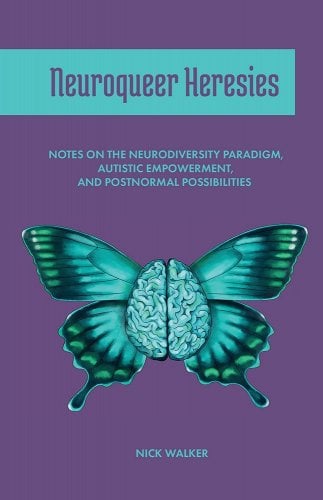
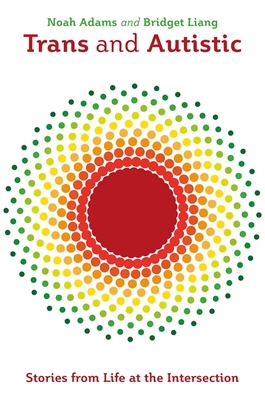
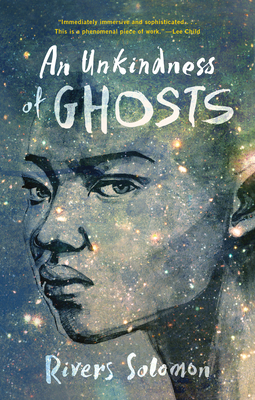
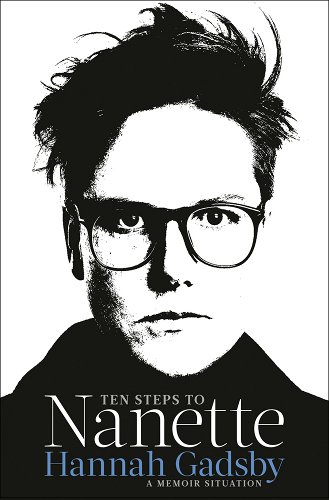
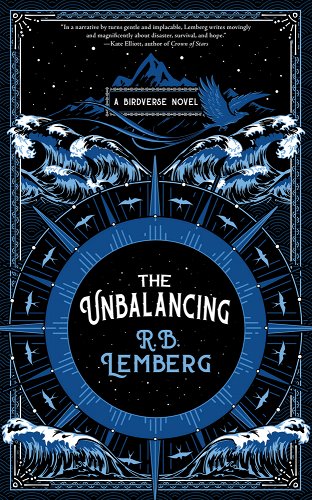
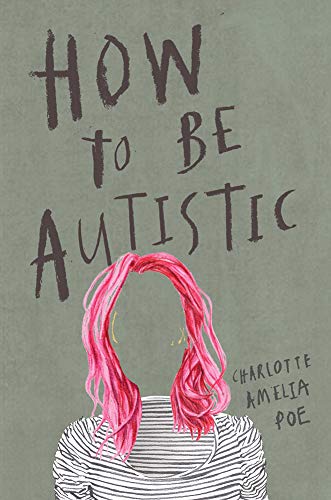
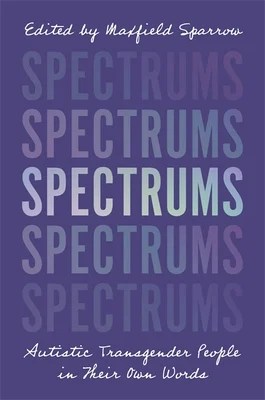
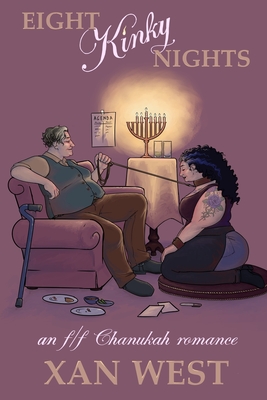

Thank you for this list!!! My biggest recommendation is Unmasking Autism by Devon Price. The author is trans and while the book is aimed at everyone, not just queer people, I think he does a remarkable job exploring so-called “typical” and “female” presentations of autism in ways that question why we’re gendering these traits. Plus, it is an excellent book for anyone to read, regardless of neurotype.
A recommendation that is adjacent to your request is Lakelore by Anna-Marie McLemore, which has two non-binary neurodivergent protagonists.
Neuroqueer Heresies was my first introduction to anything using queer as a verb, which has really opened my eyes.
I am excited to read the other books on this list!
My hands down favorite, and the most precious writing to me about autism is “We Autistics, We Villages, We Humanoids” by Gzhibaeassigaekwe (Jen Meunier) in All the Weight of Our Dreams: on living racialized autism. Gzhibaeassigaekwe is queer, and this essay pulls together autism, queerness, and more ways of diverging – of being * biodiverse * and * connected * – in ways i’ve seen no where else. Her writing affirms that BEING autistic & queer in ways i have not seen elsewhere. I can’t recommend this essay highly enough. The book has other wonderful, not necessarily queer, writing & art, but that essay alone is worth checking the book out for. Gzhibaeassigaekwe also writes poetry here – https://nerveinthecurve.wordpress.com
some quotes that really stuck w me and i hope help convince others to read this essay – “This body is a lifelong love affair from childhood onwards, capable of deep relational insight. My body naturally demonstrates an essential and often forgotten principle of life on earth: reliance on the village of each other for a full and meaningful life. . . . . . . stims: emotion as movement, movement as emotion. body expressiveness in a language broader and deeper than the linear word can convey; ceremony; a means of calm and a physical translation of joy. . . . Autism Speaks not only caters to this systemic fear-privilege, but suppresses the reality of systemic violence against Black and Brown autistic humanoids and silences our voices because we do not fit neatly inside the victimized-white image that makes autistic and disabled bodies marketable within a capitalist system . . The fear-privilege narrative of Autism Speaks hinges on perfecting the white male body and a powerful counter to that narrative hinges on autistics of color speaking in the forefront of that resistance and strongly centering queer and women-identified autistics . . . we must question and name more deeply the violence of what is being prescribed as normal when it is itself so steeped in narratives of violence and racism. . . . we talk about disability as constructed: that we are disabled by a world that was not built for us. But the reality is that the industrialized world we have come to accept as ‘normal’ was not built to sustain life at all, only to consume it. . . .our voices need to be heard across the movements that are rising today as we resist the final solution of ‘curing’ biodiversity. There is one common human disability that we all share and is not socially constructed: without air, without water, without land and without each other, our bodies, without exception, will die. “
Meunier, Jen. 2017. “we autistics, we villages, we humanoids.” In All the Weight of Our Dreams: On Living Racialized Autism, edited by Lydia Brown, E. Ashkenazy, and Morénike Giwa Onaiwu, 425-434. Lincoln, Nebraska: DragonBee Press.
PPS i also am desparate for more white autistic ppl to recognize how autism is a phenomenon/invention of white supremacy and colonialism (literally, the academic papertrail goes back to eugenics – and on other levels too), and this essay expresses that in a beautiful & empowering way – that our differences are ESSENTIAL and precious. but even if you’re not here for that, still consider reading it!
Thank you for recommending for that essay! I am going to borrow the book from my library in order to read it. In searching for how to get a copy, I found that the editors discontinued publication of the book because they learned that they made harmful mistakes in publishing. They are working towards publishing a second addition which corrects those mistakes. I would recommend anyone interested in this anthology to read the letter from the editors on their website. I am still going to read the anthology along with keeping their letter in mind and maybe skipping one essay that was specifically mentioned in their letter.
Also, thank you this call to realize how autism is so tied to white supremacy.
ommmmg yaaaaay i am so glad this is of interest & thank you for letting me know. also thank you for the heads up about the republication!!!
Thanks for these recs, definitely want to check them out!
also, dear letter writer – i am a genderqueer person in my early 30s too, and one of the beauties of arriving into autism questioning as a queer person, is that i don’t need to hold it as a yes/no question, or a diagnosis. i hold it like queer identities – ‘autism’ is a signifier for finding some more of my people, understanding and celebrating my needs, understanding my past & healing my younger self’s bruises from the world’s attempts to make me smaller and what i am not. honoring what i will need in the future. language for talking to my body and to others. it is for me to decide if it is mine (it most decidedly is) and it is a new and exceedingly helpful map for my journey, not a box i am in or out of <3 <3 <3 <3 <3
thank you Casey for these recs!!! and thank you to all the AS writers writing more these days about bein autistic!!!
Love this and strongly relate!
<3 <3 <3 <3 <3
Thank you for this list! I would also recommend a memoir by Clem Bastow – “Late Bloomer” – about discovering and celebrating their autism as a queer person in their 30’s. Funny and informative!
Great list! I’d also recommend I Overcame My Autism and All I Got Was This Lousy Anxiety Disorder by Sarah Kurchak. It’s a memoir from Canadian bisexual autistic woman.
Seconded – I’ve read a ton of autistic authors in the past few years, and particularly a lot of memoirs about adult diagnosis, and this is one of the very best. While the author’s gender comes up, I would say the focus is most heavily on the strange position we occupy as autistic adults in the world’s preoccupations and stereotypes regarding autism – the misunderstandings, the misinterpretations, and all of it from a highly political and not just personalised standpoint.
What an amazing list, thank you!
Thanks for this. I would also like to recommend the Murderbot series, by Martha Wells. The author identified herself as “not neurotypical” in a question and answer thing. I have never felt more connected to a character than when reading about how Murderbot feels about interacting with humans. Murderbot seems to be asexual and there are queer characters and poly relationships and people using they pronouns in the books. These books are mostly about Murderbot rescuing humans from other humans in variously intricate ways.
Another interesting one is Failure to Communicate by Kaia Sønderby, a queer autistic writer. It feels a little rough or predictable in spots, like it could have used a bit more editing, but it centers on a queer autistic character doing cool things in space! I enjoyed it and again had a few moments of connection with the character which I don’t often get in books.
Thank you for this list! Delighted to find some books here I didn’t know about.
Also, if Sabine reads YA, I’d highly recommend Maya McGregor’s “The Many Half-Lived Lives of Sam Sylvester”. It’s about a non binary autistic teen moving house after a homophobic attack, and finally finding a supportive community in a small town – but also a murder mystery. I will say that this is a book that is very much about lifting with trauma, which I found very authentically portrayed, but there’s also a lot of joy. The character of Sam carved out a space for non binary autistic representation in a way I hadn’t really seen before (though I’m happy to hear above that there’s more out there).
I looooove how many additional recommendations are in the comments! Keep em coming!
Thank you so much for this reading list! As a genderqueer autistic myself, I’ll see if I can hunt down some of these – How To Be Autistic is a cracker, though, I’ve already read it and love it deeply (especially since the author comes from the same part of rural England as I do, and talks about fandom a lot as well).
Weirdly enough, while I don’t think I could recommend them in good conscience, there’s a weird amount of genderqueerness in the heavily-gendered “women with autism” books that I’ve read? Both “Aspergirls” by Rudy Simone/Artemisia (she changed her name after the book was published, and it’s not been reprinted in her new name yet afaik) and “Women and Girls with Autism Spectrum Disorder” by Sarah Hendrickz – books written by autistic women, with contributions from autistic women – have chapters on gender, in which the authors and plenty of the interviewees describe their own genders in very genderqueer ways.
According to Aspergirls, a core part of “female Aspergers”, listed in a grid of “female Asperger Syndrome traits” is to “Think of herself as half-male, half-female (well-balanced anima and animus)”, and says “we tend to be androgynous creatures – in mannerisms, behaviour and, mostly, in essence”. Simone/Artemesia even outright says “In my mind, in my self-perception, I have a male identity as well as a female one and can visually picture my male self.” Some of the interviewees talk about feeling alienated from gender roles, and the idea of identity as a general whole being fluid in autistic people is discussed. It’s a deeply problematic book, but honestly it’s what got me started on identifying as genderqueer myself, because I realised I related so much to what they were saying about gender.
Hendrickz’s book is way better about it than Artemesia ever is (I get the impression that Artemesia’s homophobic tbh); Hendrickz’s book actually uses words like genderfluid and non-binary, and they’re used by the interviewees to describe their genders. While I don’t have a copy to hand, the interviewees generally describe themselves as autistic women, but say things like “I feel genderless, gender roles mean nothing to me” and “when I’m by myself, engaging in my special interests, I feel like I’m a young gay man; maybe I do have a secret want to be male”. Hendrickz proposes here that autism very often makes people who have it innately gender-nonconforming – unlike other researchers, who claim that it makes you extremely masculine, she actually holds space for autistic transfems too. She talks about putting a call out for autistic trans people to be interviewed, and does print stuff from autistic trans women who answered that call (although she seems worryingly confused about why she didn’t get any responses from binary trans men, or “women who live full-time as men”). It’s also relatively problematic – autistic trans researcher Wenn Lawson is quoted and referenced throughout the whole book, but is only labelled accurately as being a trans man in the chapter on gender, and Hendrickz seems to think that you should see if you can make a new gender for yourself as an autigender cis person before identifying as autistic and trans – but the open genderqueerness on display made me happy to read, too.
The tl;dr on this is that a lot of the “women with autism” books that I’ve read that have talked about gender have basically said/implied that to be an Autistic Woman is to be genderqueer. While they’re both problematic books, and I can’t really recommend you read them (if you have to read one of them, read “Women and Girls with Autism Spectrum Disorder” – don’t bother with “Aspergirls”), as a genderqueer person I did feel very affirmed; while the term “autigender” doesn’t appear in either book, I feel like that’s what they’re describing, and they were both quite instrumental in me exploring various genderqueer/non-binary labels.
(P.S. The BBC podcast “1500 Seconds On Autism” has an episode about the “autigender” label and they interview both someone who identifies as autigender, and someone who identifies as non-binary and autistic – highly recommend!)